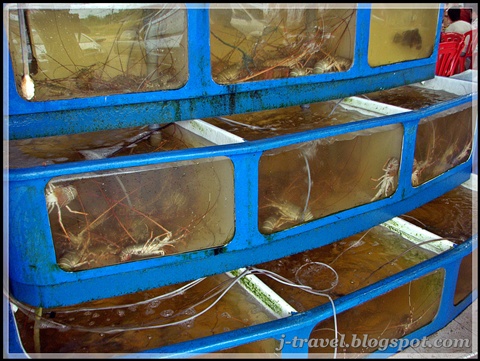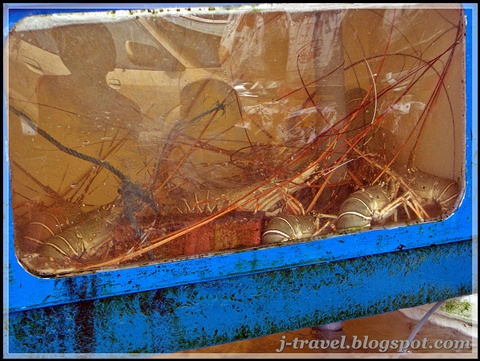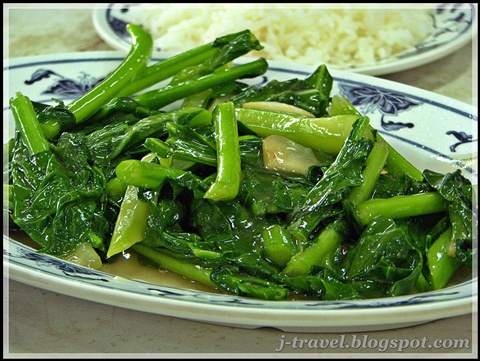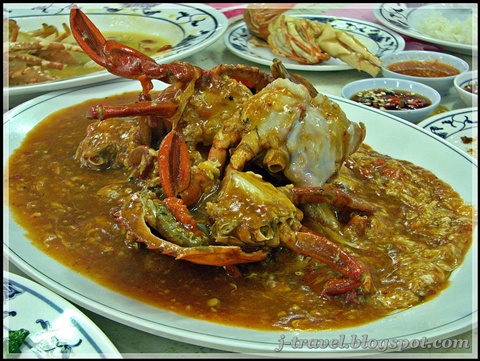It must come to
Japan with an open mind and prepared to consummate the most surprising: a photograph reproduction of the Eiffel Tower, surfing an artificial wave pool, go in good company or a love hotel nap in a space capsule.

The image of
Japan has emerged based on false rumors and issues, to discover true prejudices must be abandoned. Between the elegant formality of
Japanese label, and social exchanges, but tinged with candor sometimes extremely bullangueros that happen around a few drinks, between the asepsis of the amazing shopping malls and rural festivals, everyone eventually formed his own of
Japanbest time to travel Japan



Spring (March-May), with its clear skies and cherry blossoms, the season may be held in
Japan, but also coincides with the holiday season of the
Japanese and many of the most popular destinations are usually filled with tourists native . Autumn (September to November) becomes a very conducive to travel: the temperatures are pleasant and are accompanied by the beautiful autumn colors of the field. The mid-winter months (December to February) can be very cold, while embarrassing the summer months (June to August) can turn the shortest trip away from the heated areas into a true sauna. But this season offers travelers the advantage of being able to enjoy more peace of the major tourist attractions. At the time of planning the trip, it is worth recalling that move around the country and find accommodation during the peak New Year Golden Week (late April to early May) and O Bon Festival, mid-summer , can be a tough headache
Japan Holidays and festivalDuring the most celebrated in
Japan, New Year (from December 29 to January 6) and Golden Week (which include Green Day, Constitution Day and Children's Day, 27 April to May 6), means of transport and accommodation recorded packed. Other prominent events include the Adult Day Monday or Lucky (the second Monday in January), when they celebrate the coming of age (20 years) of young men and women. In association with the festival, the
Japanese celebrate the end of winter throwing beans on the streets while shouting "up with the good luck out demons." The Hanami (contemplation of the trees in bloom) usually arranged between February and April, the romantic Tanabata Matsuri (Festival of Stars) is the July 7, and O Bon (Festival of the Dead), when lanterns lit place at sea, rivers and lakes to symbolize the return of the deceased to another world, occurs in mid-July and August.
The festival of Kyoto called Gion Matsuri (July 17) is perhaps the most famous of the country. Its peak is led by a huge parade floats pulled by men and decorated with great detail. This celebration dates back to the ninth century, when the inhabitants of the city went in procession to ask the gods to extinguish a pest. Other festivals include the curious and entertaining Niramekko Obisha (January 20 in Chiba), in which participants in a contest combining the consumption of sake with the ability to remain unmoved Undaunted, the most-proclaimed winner, the Yah-Yah Matsuri (the first Sunday in February and the following Saturday in Owase), an oral contest in which participants shouted slogans samurai and try to take a terrifying, after which they are naked and bathe in the ocean, and Day Panties Giving (March 14), a strange sort of sequel to Valentine's Day, in which men should give to your partner panties
best travel places in Japan Tokyo The most prominent feature of the
Japanese capital is its incredible dynamism, although in general can be somewhat taciturn, with their tiny apartment buildings and office blocks, crossed by highways crowded air traffic. But this is the price of
Japanese success. Many Tokyo suburbs have not yet succumbed to the culture of the supermarket: the streets have a succession of small shops and busy restaurants, most of which stay open until the early hours.
Along with the high-rise office buildings are discovered small enclaves belonging to another Tokyo: an old wooden house, a Kimono, a
Japanese inn, an old woman in kimono sweeping the pavement outside his house with a broom straw. The capital is mainly a place where the pace of consumerism collides with quiet moments that have survived from the oldest traditions. Is a city full of life that will never end the visitor to explore.
Tokyo emerged as a vast conurbation that enters the Kanto Plain from Tokyo-wan Bay. Almost completely rebuilt after an earthquake in 1923 and again after the bombing during the Second World War, Tokyo has literally risen from its ashes. Roughly divided into two luxury commercial and office districts west of the Ginza shopping area and residential neighborhoods, more prosaic, in the East. For visitors, most of the points of interest are located in the area bounded by the railway line of JR Yamamoto, surrounding the center of Tokyo.
Traditional tourism activities will not be any memory of this magical city, which is not an excessive interest and architectural monuments to visit. In the post-war reconstruction during the practical considerations prevailed, so much of the urban landscape is rather gray and dreary. To enjoy the city of intensity should be immersed in the incredible bustle and enjoy the few quiet moments. Ginza stands as the most famous shopping area of the city: rich, vital and popular, is the place where the visitor will certainly lighten your wallet. Ginza also overflowing small private galleries, which makes it the appropriate area to stroll and browse among their offerings, but it is intended to consume. Ueno-Koen, a park located north of downtown, boasts some of the best museums and galleries in
Japan. The Tokyo National Museum contains a selection of
Japanese art world's biggest, the National Science Museum is a great showcase of free entry, full of all kinds of scientific objects, and the Shitamachi History Museum faithfully reproduces the old neighborhoods Tokyo.
Traditionally considered the heart of the old town, in the Asakusa district, northeast of the city, lasted some flavor to old and authentic Shitamachi. Its main attraction, the temple Senso-ji, is probably the place of Buddhist worship more active in the country, although the entire area is suitable for walking. Yesteryear, Asakusa district was considered an unpopular tolerance, a breeding ground for drama, music and more sordid changes, and now the last remaining vestiges of a rugged and glamor. Shinjuku, west of downtown, is currently the most lively entertainment for the citizens.
If you only have one day to visit Tokyo, and is intended to enter the
Japanese phenomenon of modernity, this bustling district expansion is the right place. Most sites of interest in the city meet in this area: high-quality department stores, malls with affordable products, fluorescent dazzling, government offices, crowds, video screens in the streets, restaurants to eat pasta
Japanese standard cabarets, churches and sordid Recollects local strip-tease.
Overnight stay in Tokyo is expensive. There are a couple of youth hostels in the west of the center and several relatively inexpensive options in Ueno and Ikebukuro. The district of Shinjuku also mean an alternative, provided you are willing to enter a tiny hotel room, while the neighborhood is one of the best places where to eat. Ueno and Asakusa offers the best traditional
Japanese restaurants, and restaurants of Ginza are recommended during the day, but very high prices and a dinner.
Mount Fuji The highest mountain in
Japan (3,776 m) is the natural of the most visited country. This is a perfectly symmetrical volcanic cone which came last erupted in 1707, filling the streets of Tokyo ash, 100 km away. On exceptionally clear days you can see its outline from the capital, but during much of the year, visitors should be considered lucky if it otearlo 100 meters away, as Fuji often is hidden by clouds. Its appearance is particularly attractive in winter and early spring, when a cap is adorned with snow.
July and August host the official season for climbing Mount Fuji, the
Japanese, always eager to meet the standards, prepare the backpack often active in these months. In fact, the ascent of Fuji can be completed at any time of year, but in midwinter is reserved for mountaineers more tanned. This tour will never be raised lightly, because the mountain is high enough to cause altitude sickness, and instability in weather conditions can be dangerous. The best time to reach the summit at dawn, gives the sunrise and, furthermore, there is less likelihood that the top is immersed in the clouds, to arrive in these conditions supposed to undertake the running time in the afternoon, stay overnight in a shelter of the mountain (expensive) and start again early in the morning, or make the ascent at night.
Fuji Five Lakes, a typical destination among people in Tokyo for a day of hiking, stretching, forming an arc around the northern side of the mountain. They offer water sports, amusement parks, ice caves and beautiful views of Mount Fuji. The fastest way to reach this place is done with buses departing from the Shinjuku terminal of the capital. A packed bus network links the region of the lower mountain zone of lakes.
Kyoto Backed by hundreds of temples and gardens, Kyoto was the capital of the country between 794 and 1868, and even today serves as the cultural capital of
Japan. Although the traditional architecture is increasingly beset by industrial and commercial sector, Kyoto kept gardens with pebbles combed rake, sensuous profiles the roofs of the temples and geishas contemporary so sought after by tourists eager to topics. The imperial palace stands as one of the few monuments in the center of Kyoto. The present building was built in 1855 and may only be entering him in the course of a tour.
The eastern part of Kyoto, in particular the district of Higashiyama is the area designated for the city to visit its beautiful temples, stroll and enjoy the nightlife traditional Gion. The temple Sanjusangen-do is a key point of the city. It houses 1001 statues of Kannon of the Thousand Arms (the Buddhist deity of mercy). To the northwest of Kyoto Zen temples are diverse beauty, including Kinkaku-ji temple, which in 1950 was completely destroyed by a fire caused by a mad monk, and was later reconstructed in detail, including the lining of bread gold. Takao district, tucked away in the northwest, is famous for its autumn foliage. The castle of Himeji-jo, which can be detected in a one day trip from Kyoto, which is the
Japanese castle standing more impressive, and is known as Garza Blanca, referring to its majestic white silhouette.
Throughout the year there are many festivals in Kyoto, so it becomes essential to book accommodation well in advance. Among the most spectacular are the Aoi Matsuri (May 15), which commemorates the prayer of the population during the sixth century to seek help from the gods before a disastrous climatic conditions, Gion Matsuri (July 17), the most famous festival of
Japan, which culminates with a huge parade, Damon-ji Gozan Okuribi (August 16), when bonfires are lit impressive to say the souls of ancestors and Kurama-no-Himatsuri (October 22), with a procession portable chapels accompanied by young people with burning torches.
Most lodgings are half price in the north and northwest of the city, although in this area there are a couple of fine hotels. In the center of Kyoto you can taste international and
Japanese food at reasonable prices, while in the eastern area is rich with restaurants and western style yakitori.
Daisetsuzan National Park The largest national park in
Japan (2,309 km ²) is located in central Hokkaido, the northernmost and second largest island of the country. The park, which covers several mountains, volcanoes, lakes and forests, is spectacular hiking and skiing. In summer and early autumn increase visits immoderation and require several days to get away from crowds. Sounkyo itself as the center of the park has hot springs and a throat, and is an ideal starting point for walking tours through the interior of the reserve. Furano, one of the most famous ski resorts in
Japan, has one of the best powder snow in the world. A short distance northeast of Furano and are located away from the bustle of the remote villages Tokachidake Onsen and Shirogane Onsen, with hot springs, both are established as an excellent base for hiking and skiing.
Nagasaki Nagasaki city is a dynamic and colorful, but its unfortunate fate as the second goal of atomic bomb has relegated to the background its fascinating history and its contacts with the Portuguese and Dutch. Ukrami, the epicenter of the atomic explosion, remains today as a peaceful and prosperous port city where stands the shattering of the Atomic Bomb Museum, an evocative reminder of the horrors of nuclear destruction; and the hypocenter of the park, with a column of black stone that marks the exact spot of the explosion, and various relics and ruins. In the temple of Fukusi Zen-ji, in the form of a turtle, a tane bell every day at 11.02, the exact time of explosion. One of Foucault pendulums (a device that shows the rotation of the earth) of the larger world hangs inside the temple.
At the southern end of Nagasaki, the Glover Garden, situated on a hillside, collects old houses inhabited by residents of the city. Escalators, fountains and fish red give a bucolic appearance, but the buildings are very attractive and the views of Nagasaki, spectacular. An hour's distance north of Nagasaki Huis ten Bosch is an amazing reproduction of a Dutch town, with its windmills, its banks, a replica of the royal residence of Dutch tulips and a cheese. In fact, this is a residential project up to ten thousand people who want to live in a sterile version of the Netherlands in the southernmost
Japanese island
Kirishima National Park Krishima, southern Kyushu, noted for its magnificent mountain scenery, its hot springs, the impressive-taki waterfall Senriga and splendor of wildflowers in spring. A day's journey of the population of Ebina-kogen is a string of volcanoes that hikers can climb to the top, but if you want to undertake shorter walks, there are various routes that surround volcanic lakes, including Lake Rokkannon, an intense blue color. The view south from the summit of Mount Karakuni-Dake are spectacular: on a clear day, you can get a glimpse of Kagoshima, the nearest city, and the smoking cone of Sakurajima, a volcano decidedly hyperactive. A bus runs between Kagoshima and Ebina-kogen.
Noto Peninsula, Hanta This peninsula combines rugged seascapes with a traditional rural life and festive activities. Emerging in northern Honshu, and exposed the wild west of the peninsula may be the most interesting, as it has developed to a lesser degree than the rugged east coast. The festivals of the region are dozens, including festival Gojinjo Daiko Nabune of Wajima (July 31 and August 1) with the performance of ardent drummers with demonic masks and strange straw hats, and Ishizaki Hoto Festival ( early August), known for its parade of lanterns adapted to long poles. Is easily accessible by train from the Peninsula Kanazawa, Toyama and Takaoka.
Love Hotels In the Shibuya district of the city's love hotels are for everyone. The subject of these curious establishments ranging from a miniature Gothic castle, a temple to the Far East, and the decoration of its rooms can accommodate most fantasies, from harem extravaganza to a set of science fiction. The customer can also choose to vibrating beds, mirrors from wall to wall installations sadomasochists and video cameras (do not forget to leave the tape).
At the entrance of a hotel of love is often installed with a screen pictures of all the lighted rooms. The customer selects the preferred pressing a button under the image, and pays the price. Although discretion is rigorous, not all customers go to these establishments to consummate a clandestine meeting, also attended many stable lack of space at home to relax together.
Seagaia Seagaia Ocean Dome is listed as an incredibly entertaining: it is a white sand beach of 140 m in length, with their piece of ocean and an eternally blue sky, all in a completely controlled environment. The most amazing happens to find that this complex slashing the real waves and sandy beaches along the coast of Miyazaki-ken, Kyushu. Can be considered the apotheosis of the
Japanese obsession with theme parks and amusement more aseptic. To get Seagaia, Myazaki part of a bus, a city of considerable size and mild climate in the southeast coast of Kyushu
activities in Japan travel Many national parks have paths for trekking. On the outskirts of Tokyo, the most popular spots for tourists are the Nikko National Park and the Chichibu-Tama. Also interesting excursions can be undertaken, but much more solitary, in the district of Gumma and the Kansai region of Nara. To discover a
Japan that few outsiders know, you have to go to the Central Alps, much less populated. Ski season usually extends from December to April. Most stations are located on the island of Honshu, but there are also quality powder snow in Hokkaido. The islands of Okinawa, in the extreme southwest of the country, offer excellent opportunities for diving. Cycling is especially popular in coastal regions more flat, although some intrepid have dared to climb Mount Fuji. In
Japan, golf is synonymous with prestige, and who want to step on a golf course should have a large wallet and some influence in the business. The minimum cost of this sport is about $ 100 (115 euros) per day
History of Japan the first inhabitants of
Japan were fishermen, hunters and gatherers who arrived through land bridges from Korea to the west and Siberia to the North. There is also the belief that groups of Polynesians who arrived by sea were part of the ethnic mix. In the year 300 AD, the Yamato kingdom, sun worshiper, had loosely unified the nation through conquest and alliances. Buddhism was introduced from China in the mid-sixth century and soon became the official religion. Rivalry between Buddhism and Shintoism, the traditional
Japanese religion, is neutralized to attend the Shinto deities as manifestations of Buddha.
With the relatively stable rule, especially after the conquest of indigenous ainu in the ninth century, the emperors of
Japan focused on leisure and academic interests at the expense of governmental tasks. Fujiwara family, noble but corrupt, was the most important positions in the imperial court. In the provinces, was gestating a new power: the samurai, or warrior class, raised arms to defend their autonomy, and showed their strength in the capital, Heian (now Kyoto). The Taira clan briefly eclipsed the Fujiwara, but was in turn defeated by the Minamoto family in 1185. After assuming the rank of shogun (military leader), Minamoto Yoritomo set up the center of power in Kamakura, while the emperor was kept as a symbol of Kyoto. It began a long period of feudal system under the control of successive samurai families until imperial power was restored in 1868.
Broadly speaking, this feudal era can be divided into five main periods. In the Kamakura era (1185-1333) Mongol troops of Kublai Khan invaded the country several times.
Japan managed to expel them, but weakened the government lost the support of the samurai. Emperor Go-Daigo presided over the beginning of the Muromachi period (1333-1576), until a rebellion planned and organized by a samurai discontent, Ashikaga, forced him to flee to the mountains. Ashikaga and his descendants ruled the country with a gradually decreasing efficiency, and
Japan was plunged into civil war and chaos. Oda Nobunaga and his successor Toyotomi Hideyoshi pacify and unify the various factions during the Momoyama period (1576-1600). The rapid spread of Christianity during the Christian Century (1543-1640) was first tolerated, then cruelly punished when the religion began to assume an intruder threat. During the Tokugawa period (1600-1867), Tokugawa Ieyasu defeated Hideyoshi's successor to the young and established in Edo (modern Tokyo). The emperor had a purely nominal authority in Kyoto as the Tokugawa family ran the country into an era of national isolation.
Japanese were forbidden to travel abroad and trade with other countries, and foreigners residing in
Japan were subjected to strict surveillance. Some feel that the rigidity in the time taken to accept without question the rules of absolute obedience and loyalty lives on today.
In the early nineteenth century, the Tokugawa government was stalled and undermined by corruption. Foreign vessels tested
Japanese isolation with increasing insistence, and famine and poverty weakened popular support for the government. In 1867, Keiki, the shogun in power, abdicated its responsibility and the Meiji Emperor took the reins of the state, leading the country in a race towards unbridled Westernization and industrialization. In 1889 a constitution was introduced Western-style whose principles were based on the national consciousness along with a return to traditional values. The increasing self-esteem of
Japan was demonstrated with the comfortable defeat it inflicted on China in the Sino-
Japanese War (1894-1895) and Russia in the Russo-
Japanese War (1904-1905). Under the mandate of Meiji's son, Yoshihito,
Japan was aligned with the Allies in World War I but, instead of thoroughly involved in the conflict quickly expanded its economy through trade and transport. Emperor Hirohito ascended to the throne in 1926. The worldwide economic depression that began in 1930, prompted a growing nationalist sentiment. The popular agitation led to the consolidation of military power:
Japan invaded Manchuria in 1931 and entered into large-scale hostilities with China in 1937.
Japan signed a tripartite pact with Germany and Italy in 1940 and, when unsuccessful diplomatic efforts to ensure the neutrality of United States, the
Japanese people joined the World War II with a surprise attack on Pearl Harbor on December 7, 1941. At first, the
Japanese troops were quick victories, pushing their front lines to India, the Australian border and central Pacific. The Battle of Midway opened the U.S. counterattack, undermining the naval superiority of
Japan and by tilting the war against them. In August 1945, with
Japanese forces in retreat on all fronts, a declaration of war by the Soviet Union and the atomic bombs dropped by United States on Hiroshima and Nagasaki, it was all over. Emperor Hirohito announced unconditional surrender.
Japan until 1952 occupied by foreign forces in order to demilitarize the country and dismantle the power of the emperor. Thanks to a program of recovery, the economy grew rapidly and
Japan became the largest exporter of the world, generating huge profits in business and dominate the fields of electronics, robotics, computing, automotive production and banking.
With the advent of the 1990s, the old certainties seemed to vanish: the legendary
Japan's economic growth declined to its virtual paralysis, the Liberal Democratic Party (LDP), trend conservative, was ousted and reinstated the following year, a strong earthquake in 1995 devastated the city of Kobe (a disaster made worse by the slow reaction of the government), and a millennial cult with doomsday ambitions unleashed a lethal gas attack on Tokyo subway in the same year.
The arrival of Keizo Obuchi, Prime Minister Hashimoto's successor, encouraged a positive change of direction. Hashimoto had fallen, punished by the electorate due to economic instability. Obuchi brought several years of economic vitality, but he died from a stroke while in power. His successor, Yoshiro Mori, was revealed as another without the LDP. Although Mori survived an attempted rebellion by his rival, Koichi Kato, had the lowest support among all the leaders of the most recent
Japanese history. His successor is the eccentric Junichiro Koizumi, who brought a seductive blend of nationalism and reform the government of the country. He promised to end the culture of nepotism and differs from its most recent predecessors have known for creating high expectations among the population
Japanese Culture and people Until the nineteenth century, Japanese art was influenced mainly by China and Korea, but the distinctively
Japanese aesthetic existed long before. There is a fascination with the ephemeral (as in ikebana, the art of flower arranging), the sober, and forms that reflect the random nature. Also sensed a gift for drawing, since the early Zen ink drawings to the manga (comics) in contemporary
Japan. Stresses the overwhelming passion and interest in the grotesque or extravagant, visible in many works, from the Buddhist scrolls depicting the horrors of hell to the representations of the various members of the body in the wood block prints of the Edo period of a supreme styling.
The
Japanese aesthetic is a unique channel in the architecture, from graceful Shinto temples to elaborate castles and houses nearly as subtle as cobwebs (to stay cool in summer and maximum flexibility in case of earthquakes). A very precise physical evidence is also in
Japanese gardens, meticulously planned, however it seem spontaneous and unpredictable.
Japanese theatrical traditions are the most famous kabuki (melodramatic and spectacular theater) and no (formal theater with masks). Representations of both types may be present in the theaters in Tokyo, Kyoto and Osaka. The ancient
Japanese gagaku is played drums and other instruments like the lute, the zither, oboe and flute. Pop music has a large audience in
Japan, and the female punk bands have recently begun to emphasize the voracious world of indie music.
Much of the oldest
Japanese literature was written by women, since men wrote in Chinese characters, copying text and the Chinese style, while those who had no access to educational resources needed to learn this language, written in
Japanese (hiaigana), producing the first truly
Japanese literature. Among the pioneers is Murasaki Shikibu, who wrote one of the most important literary works of
Japan, The Story of Genji, the intrigues of court life in ancient
Japan. The revered poet Matsuo Basho haiku poetry perfected in the seventeenth century. Other modern writers is the controversial Yukio Mishima, the provocative Ryu Murakami, Banana Yoshimoto sophisticated, and the two Nobel laureates: Yasunari Kawabata (1968) and Kenzaburo Oe (1994).
Who wants to learn to read in
Japanese must be willing to sacrifice several years.
Japan has one of the most complex writing systems of the world as it is based on three different alphabets (four with the Roman alphabet, Romaji, increasingly). But, unlike other Asian languages,
Japanese is not the tonic and its pronunciation can be mastered with ease. With a little effort, the traveler may accoutrements a basic repertoire of common phrases, the only problem lies in understanding the response of the
Japanese.
Both Shinto (the original religion of
Japan) and Buddhism (imported from India), Confucianism (a china import more than one religion is a code of ethics), Taoism and even Christianity, are part of contemporary social life in
Japan, and somehow help to define the vision of the world from a
Japanese perspective. Religions in general are not mutually exclusive. Shinto emerged as an expression of admiration for the phenomena of nature such as sun, water, rocks, trees and even sounds. All these natural phenomena were attributed a particular god, worshiped in temples erected in sacred spots. Many Shinto beliefs were incorporated into the practice of
Japanese Buddhism, following its introduction in the country in the sixth century.
The food is an important part of leisure during their stay in
Japan, and the gourmet adventurer discover that
Japanese cuisine is much more than sushi, the tempura and sukiyaki dishes that have allowed the knowledge of this cuisine in the rest of the world . Except for shokudo (restaurants of all types of food) and izakaya (the equivalent of a pub which also serves food), most
Japanese restaurants specialize in one type of cuisine. In an okonomiyaki (cocínese yourself) the customer chooses a mix of meat, seafood and vegetables that are fried in a mass-based cabbage and other vegetables in a robatayaki entered drinks and specializes in grilled dishes. A variety of restaurants where food is prepared at the table of the diner, just sipping a sukiyaki (beef cut into thin slices, vegetables and tofu cooked in broth), a shabu-shabu (beef and vegetables are cooked briefly in stirring boiling broth and then in wet sauces) or nabermono (a community soup, in which each prepared raw ingredients soaked in several trays). You can eat a relatively low price if only to turn the humble shokudo or food is based on benthos (for packed lunches) or teishoku (fixed menu) for the cheaper restaurants or cafes.
Drinking is the unifying agent that holds the
Japanese society: men, women and many teenagers in it. His favorite drink is beer, which can be found in almost all of the country both in machines and in accommodation in the temples. Sake (rice wine) is served hot or cold, eaten hot, its effect is faster. The hangovers of sake are memorable, so we must be cautious in their consumption.
Japanese green tea contains much vitamin C and protein. Represents a healthy and refreshing drink, and says it can prevent cancer
Japan Map




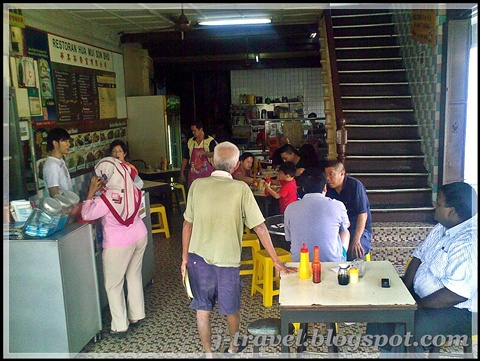

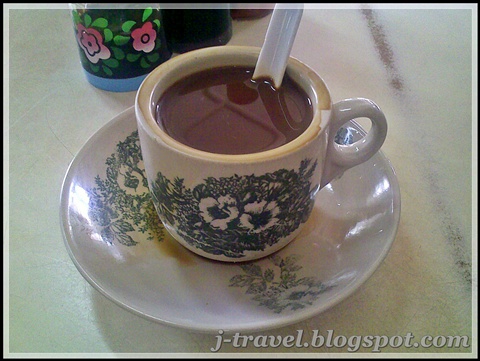






 Spring (March-May), with its clear skies and cherry blossoms, the season may be held in
Spring (March-May), with its clear skies and cherry blossoms, the season may be held in 



